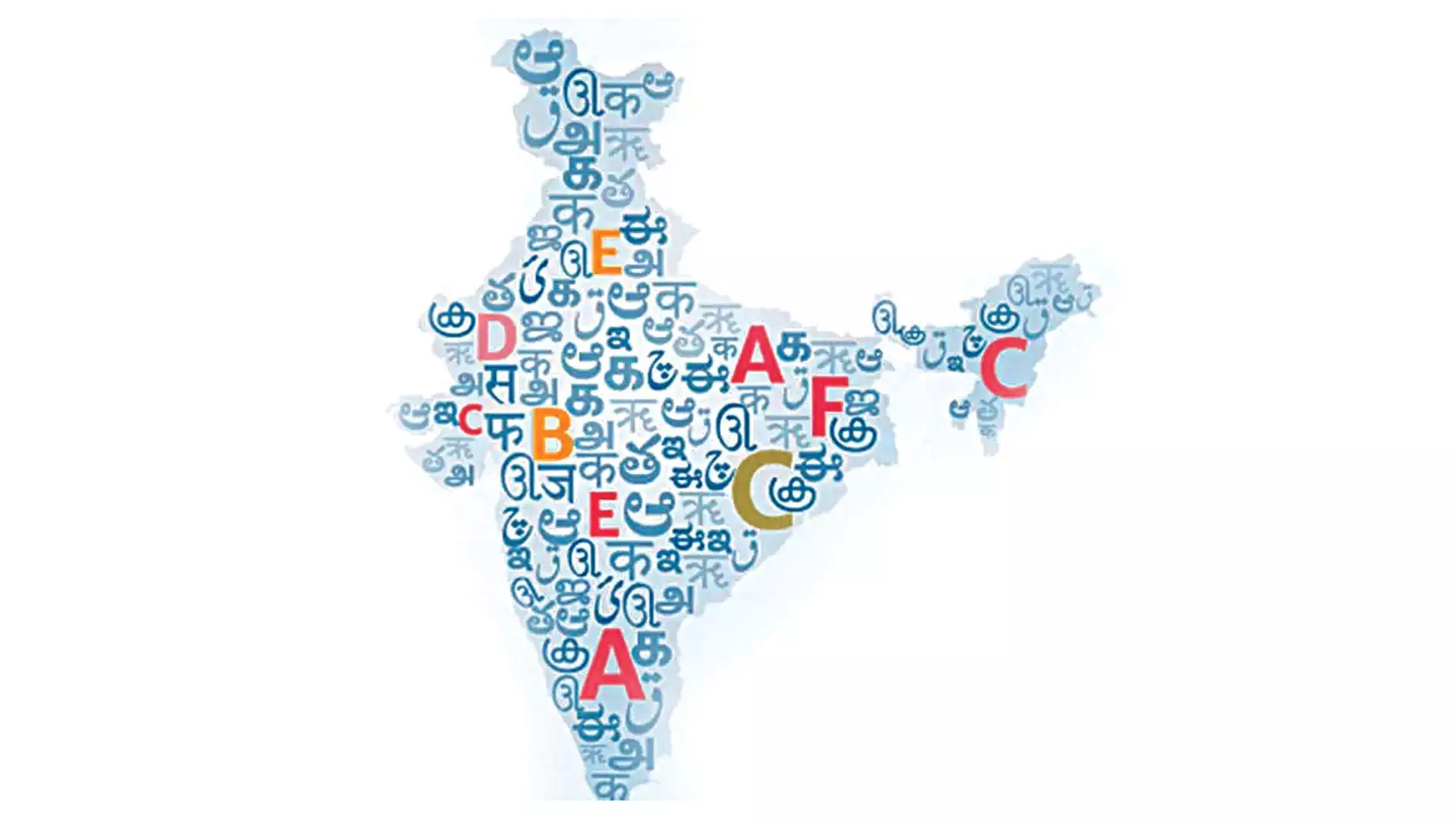Speak up to save mother tongues

Languages are the threads that weave people into diverse traditions and cultures. Regional, state, or indigenous languages convey ancestral roots and show India’s diversity. However, many indigenous languages spoken by the natives and the tribal community are on the brink of extinction. The UNESCO’s 2018 report underscores 42 indigenous languages as critically endangered. Rapid urbanisation and the pressure to embrace regional languages for livelihood have taken a toll on the dialects spoken by indigenous communities. But efforts are being made to revive some of these ancestral ‘gifts of tongues’ through teaching, integrating endangered languages into curriculums, and raising awareness of indigenous art. Many linguists from across India and abroad are toiling to preserve India's rich linguistic heritage.
Lost In Translation
Nearly 6,700 different languages are spoken around the world. India is home to over 19,500 languages and dialects spoken as mother tongues according to the 2018 census data. Sadly, over the past 60 years, around 250 languages have gone extinct according to various language experts. Ganesh Narayandas Devy, a renowned cultural activist, linguist and founder of the People’s Linguistic Survey Of India found that out of the 780 languages spoken, 400 are at risk of dying in the next 50 years. Prof. Ganesh Devy speaks about the main factors behind dying languages in India. “Due to uneven economic development and social injustice, the livelihood opportunities for people in their ‘own’ language are unavailable. These people are forced to migrate out of their language home to obtain livelihood with no inflow of others picking up the language.” Languages like Tai Ahom, Andro, Rangkas, Sengmai, Tolcha which were all spoken in the Himalayan belt have gone extinct. The Bo language in Andaman and the Majhi language in Sikkim disappeared as recently as 2010 and 2015. “Indigenous communities find it difficult to pass on their language wisdom to the next generation as speakers of these languages are viewed as inferior. “With the dissolution of language, social bonds weaken, making room for modern socialisation,” adds Prof Ganesh Devy. Dr Arup Kumar Nath from the Department of Linguistics and Language Technology, Tezpur University says, “Almost all languages lack their indigenous writing system or script. The existing system of education does not put much emphasis on orality with very little documentation done.”
Reviving Lost Voices
The revival efforts for indigenous languages have sparked much-needed discussions on saving and safeguarding the cultural diversity of India. Speakers of native indigenous languages are introducing indigenous languages in educational curriculums and teaching the youth to learn and speak a native language. Dr. Palash Kumar Nath, a linguist and multilingual education practitioner from Assam, India started the Singpho Mother Tongue School in Ketetong village of North East India where school children were given story books and cultural knowledge in the Singpho script. Similarly, non-profit organisations like the Samskrita Bharati are reviving spoken and written Sanskrit in India. UNESCO is reviving indigenous languages through digital initiatives that promote preservation, revitalization, and promotion. One of the main pioneers for reviving the indigenous languages in Odisha is Dr Mahendra Mishra an eminent linguist and folklorist. Being the first Indian to receive the International Mother Language Award from UNESCO in 2023 Dr Mahendra has worked on reviving 21 tribal languages in a span of 15 years. Speaking about his journey in reviving indigenous languages in Odisha he says “Many tribal children face the challenge of their home language differing from the language of instruction which created a barrier to understanding for tribal children.” In Odisha out of 62 tribes, 32 tribes have lost their home language completely due to assimilation with the commonly spoken Odia language. By incorporating tribal languages, songs, and customs into the teaching methods and curriculum, they bridged the gap between home and school languages. “Through bilingual education, both tribal and non-tribal teachers excelled in connecting with students, mitigating the language barrier effectively,” adds Dr Mahendra.
The Way Forward
The Indian government has undertaken significant efforts to revive indigenous languages and preserve linguistic diversity. Some of the initiatives include the inclusion of indigenous languages in educational curricula, the establishment of language revitalization programmes, and the support of community-led language preservation projects. Dr Arup Kumar Nath speaks of how individuals can contribute towards reviving indigenous languages in India.
“Sensitisation and promotion on digital platforms will immensely help the native speakers of these languages to maintain their languages. Community members should try to evolve a language economy which can help engage some people in practising and studying their languages,” he says.
Promoting pride in indigenous cultural heritage and encouraging intergenerational transmission of language and traditions can help ensure the survival and vitality of indigenous languages in India.
Language Trouble
6,700 different languages are spoken around the world
19,500 languages and dialects in India
197 languages in India are endangered
42 Indian languages are critically endangered (more than any country in the world [UNESCO]
40% of indigenous languages spoken around the world are in danger (UN)
By incorporating tribal languages, songs, and customs into the teaching methods and curriculum, we bridged the gap between home and school languages.” — Dr Mahendra Mishra, Linguist, Folklorist and UNESCO Award Winner
Voice Check
• Tai Nora and Tai Roga [Assam], Nihali [Maharashtra], Walmiki and Malhar [Andhra Pradesh], Koraga [Karnataka] and Gondi [Telangana] are on the verge of extinction
• Few Siddis, an African-descendant group near Murud Janjira Fort speak African languages
• People from Mahe, Yanam, and Karaikal in Pondicherry speak in the Indian French dialect
• Only 12,000 people in Goa speak Portuguese as a first language in the Salcete and Mormugão regions
Sensitisation and promotion on digital platforms will immensely help the native speakers of these languages to maintain their languages.” — Dr Arup Kumar Nath, Department of Linguistics, Tezpur University
Due to uneven economic development and lack of livelihood opportunities in one’s own language, people are forced to migrate out of their language homes.” — Prof. Ganesh Narayandas Devy, Cultural activist, Linguist, Founder of PLSI

